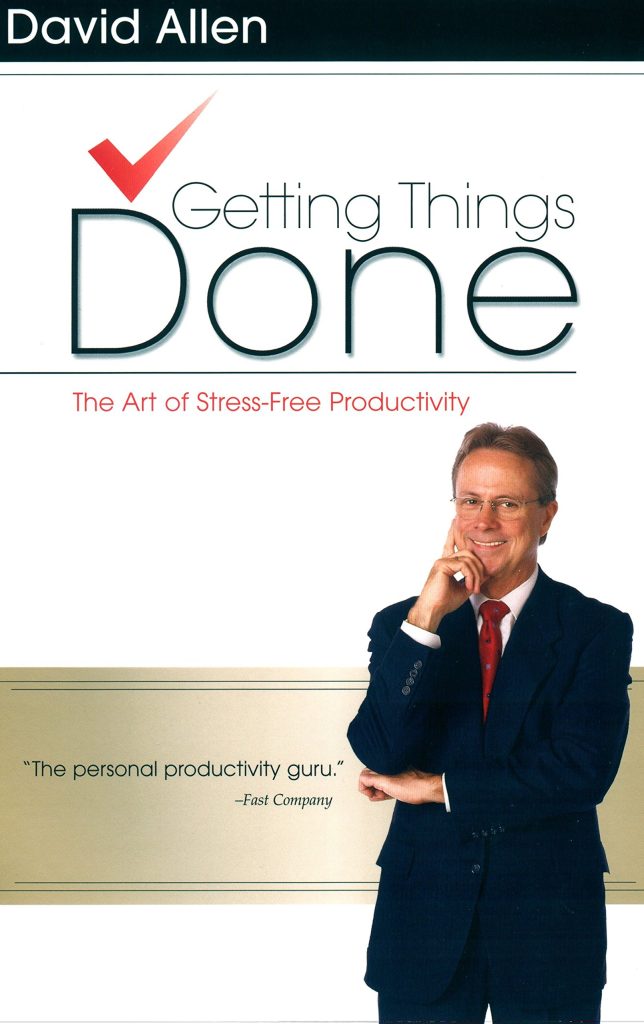Getting things done

David Allen developed the productivity approach “Getting Things Done” to assist people in managing their chores, projects, and goals. In order to achieve continual development, stress reduction, and increased quality of life, tasks and projects must be captured, clarified, organized, reviewed, and carried out. This productivity strategy combines a mentality, individual preferences, and productivity tools to boost effectiveness and accountability. Discover tools, success techniques, and productivity tips to get things done. David Allen developed the productivity approach “Getting Things Done” to assist people in managing their chores, projects, and goals. In order to achieve continual development, stress reduction, and increased quality of life, tasks and projects must be captured, clarified, organized, reviewed, and carried out. The five steps of the GTD method are summarised as follows:
Identify: The first step is to identify every work, project, and commitment you have, no matter how big or small, personal or professional they may be. Getting things out of your thoughts and into a reliable system entails writing them down or entering them into a computerized system.
Clarify: After listing all of your obligations and tasks, the next step is to make sure you understand what each one means. This entails dissecting them into more manageable tasks, defining success, and deciding what actions are required to proceed.
Organize: The third phase entails putting your obligations and duties into a structure that makes sense to you. Making lists, classifying tasks according to projects or contexts, and establishing priorities according to relevance and urgency can all be part of this process.
Examine: The fourth stage is to routinely examine your work and obligations to make sure nothing gets missed. To keep things current, this entails evaluating your to-do lists, calendars, and project plans on a daily, weekly, and monthly basis.
Execute: The last step is to effectively carry out your tasks and obligations. To achieve maximum productivity, this entails concentrating on one task at a time, working in brief bursts of focused activity, and utilizing tools and resources.
The GTD approach has a number of advantages, including enhanced clarity and focus, decreased stress, and increased productivity. You may do more in less time while maintaining your concentration on what matters most by organizing all of your tasks and responsibilities into manageable pieces, outlining what they mean, reviewing them frequently, and carrying them out effectively.
The appropriate tools and resources must be available in order to apply the GTD method successfully. This can include using a reliable system, such as a notebook, online tool, or mobile app, to record and arrange your chores. Utilizing productivity tools like calendars, to-do lists, and reminders can also help you remain on top of your obligations and due dates.
A mindset of ongoing learning and improvement should be adopted in addition to the use of tools and resources. This entails being receptive to fresh perspectives and methods as well as prepared to modify your approach as necessary to suit your unique preferences and requirements.

In conclusion, the GTD system is a powerful tool for anyone looking to improve their productivity and manage their tasks and commitments more effectively. By capturing all of your tasks, clarifying what they mean, organizing them into manageable chunks, reviewing them regularly, and executing on them efficiently, you can achieve more in less time, while reducing stress and improving your overall quality of life. With the right tools, resources, and mindset, anyone can implement the GTD system and reap its many benefits.
You may like to read (Book summary)
You may like to read (Tips and Techniques)
- Building Resilience and Grit in the Face of Adversity.
-
Finding a balance between creativity and structure to achieve success.
-
Overcoming limiting beliefs and self-sabotage on the path to success.
-
The role of education and continuous learning in achieving success.
-
Developing financial literacy and management skills for success.
-
Strategies for effective self-promotion and marketing for success.

